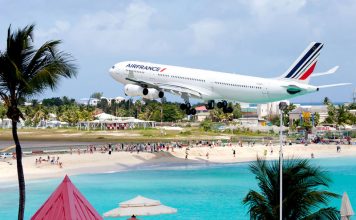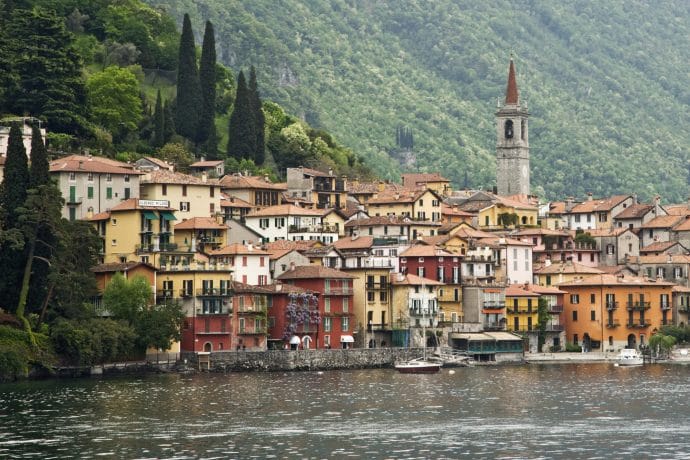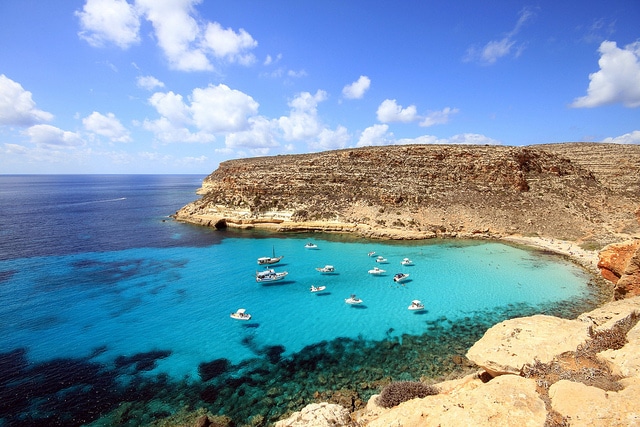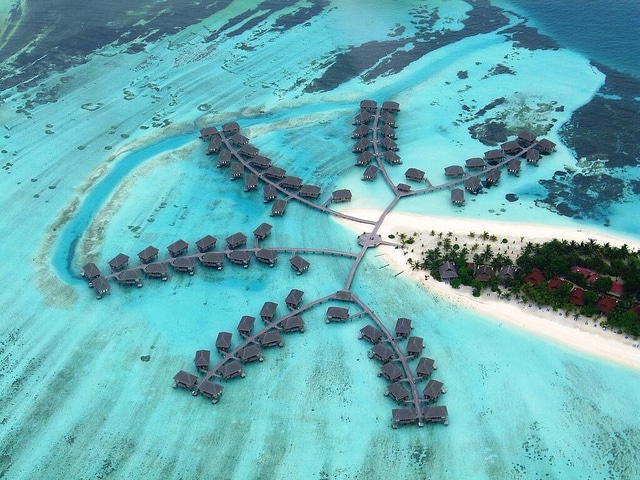Christopher Columbus died in 1506 in Valladolid, where he was temporarily buried at the Monastery of San Francisco. Three years later, his body was allegedly moved to the Monastery of la Cartuja in Seville. However, the journey of his remains did not end there: Vicereine María Álvarez de Toledo (who was the widow of Columbus’ son, Diego) requested that he would be taken to the Cathedral of Santo Domingo in the Dominican Republic so that he could be buried there, next to his son.
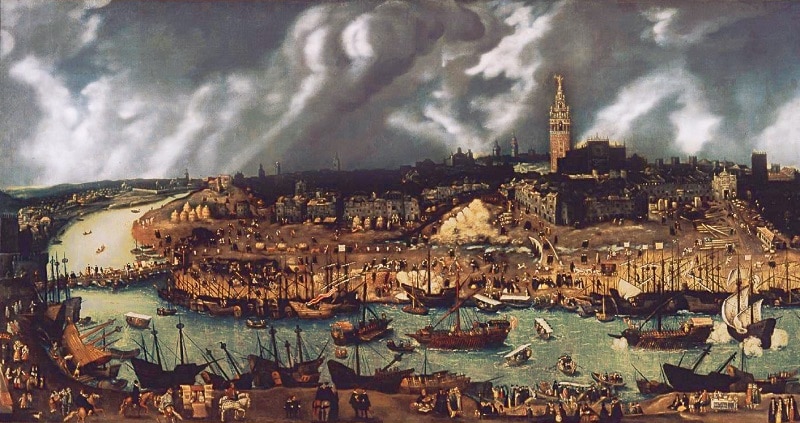
In 1795, the odyssey continued and Columbus’ body was taken to the Habana Cathedral before going to Cadiz and then Seville. However, to this day, the actual place in which his remains are found is unknown and is usually the subject of a heated discussion. Regardless of where it actually might be, the truth is that both cities claim to host his tomb because he was a fundamental part of their history.
In fact, Seville is where the famous Puerto de Indias – the connection to the “New World” Columbus arrived to – was once found. Miguel de Cervantes himself portrayed this city during those times in many of his books. The most famous one is probably the story of Rinconete and Cortadillo, in which a couple of emblematic characters embark on a long trip to Seville – the promised land – after winning at a traditional game of veintiuna.
Many of the landmarks that were built when the capital of Andalusia was the economic centre of the Spanish Empire can still be visited today, and so, we have designed a route that will take you through the Seville of the 17th century.
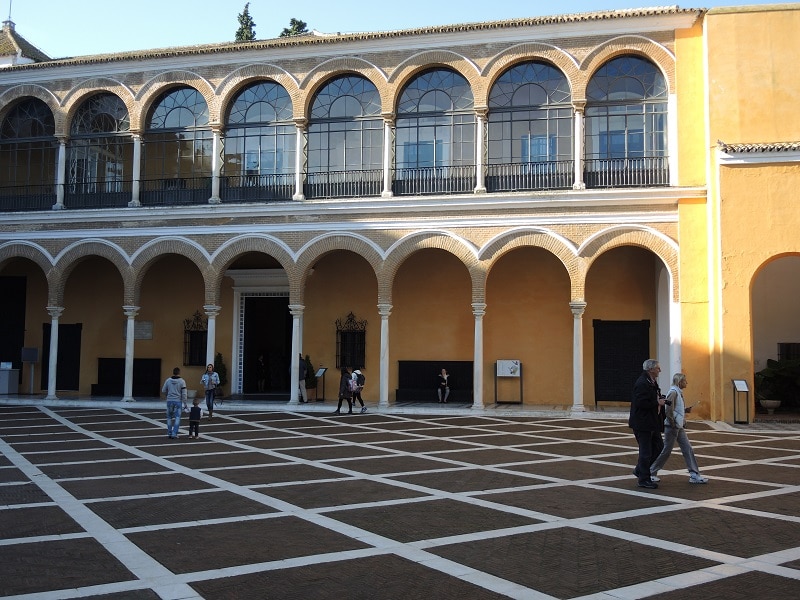
Downtown we can find the Alcázar, one of the most remarkable landmarks of Seville that was also the setting of some recent Game of Thrones scenes. However, the building found at the doors of this majestic palace is the one we are looking for.
Following the so-called Discovery of America, the Spanish Empire started importing precious metals like gold and silver. Ships would arrive at the Puerto de Indias in Seville bringing products from the “New World” and it became increasingly necessary to regulate this type of commerce, which led to the establishment of the Real Casa de la Contratación de Indias. Nowadays, the building that used to host the former has become a type of entrance hall of the Alcázar, although inside it still showcases an antique painting of the Virgin of the Navigators.
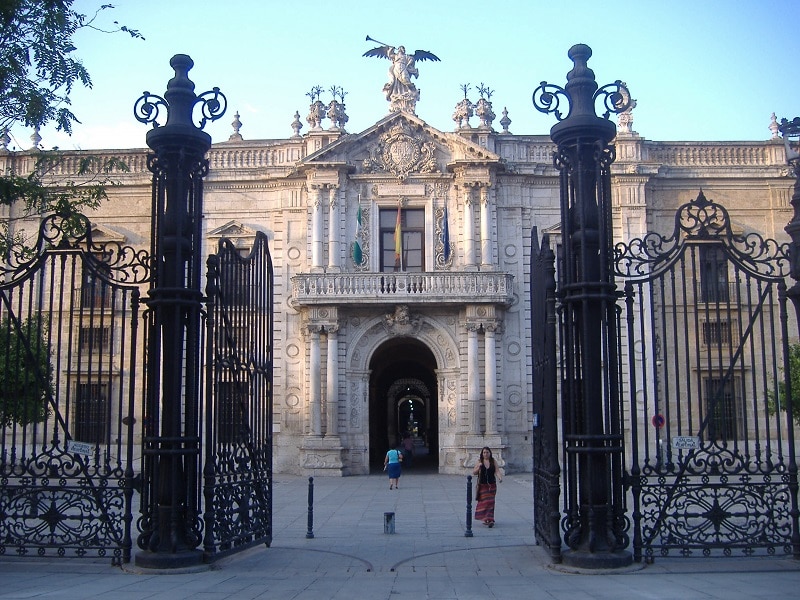
Close to the Casa de la Contratación we can find another vestige of Seville back when it hosted the Puerto de Indias. The Royal Tabaco Factory, which was the first one in Europe, was located in one of the most emblematic buildings of the Old Regime. Nowadays, it hosts the rector’s office of the University of Seville.
The conquistadores were the ones that took the tobacco leaf to Spain from South America and since the 17th century demand for tobacco around the continent grew, which is why the production of tobacco was regulated in this building. If you look close enough, you can see that on the main door there is an image of Christopher Columbus and another one of Hernán Cortes, as well as of two caravels and two Incas, one of which is smoking.
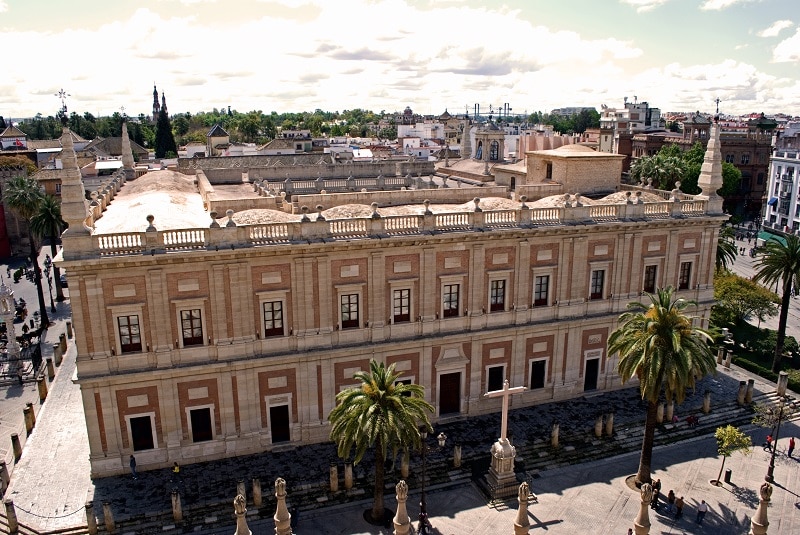
Before arriving to what is possibly the most important building on this route, we take a detour towards the Bull Ring looking for the remains of the Casa de la Moneda. This place was the hub in which silver and gold coming from America were turned into coins that would then become the exchange currency of Europe in the 16th and 17th century. Little is left of this building nowadays, except part of the foundry, which has now been turned into a small theatre.
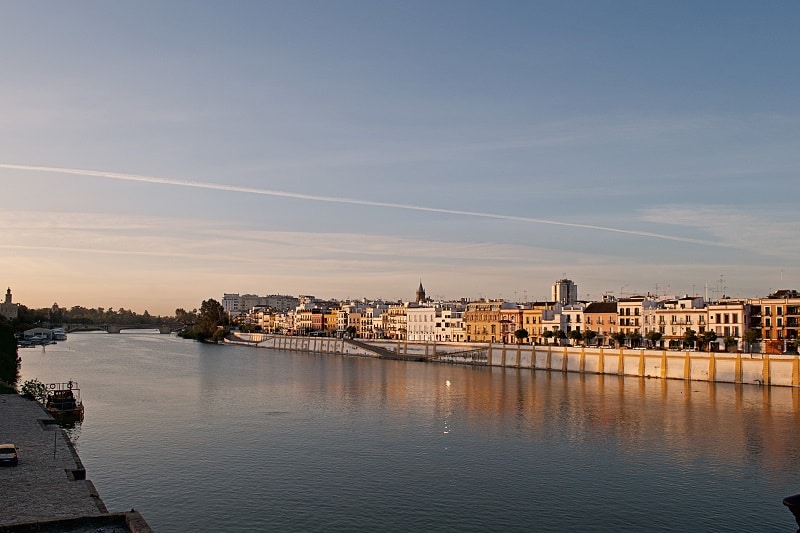
Last, but not least, we head towards the General Archive of the Indies. Every year, thousands of researchers from around the globe come to this World Heritage Site that preserves within its walls all of the documents regarding the Spanish colonies in the Americas. There are more than 46,000 volumes and close to 80 million pages of original files through which we can access more than three hundred years of history.
A large part of the building can be visited, except the library and consultation areas, for which you need a permit. At the cafeteria you can usually find researchers and academics having coffee and chatting about the history of the Spanish Empire and its colonies. However, from time to time, they also get carried away talking about the beauty of Seville and its cheerful citizens.
Leaving the Archive behind we can end our route at the river. Centuries ago, the city of flamenco, rebujitos and the April fair was the place to which ships from America arrived to. Today, locals and visitors sit at the banks of the Guadalquivir to relax and watch the sun go down, while taking in the characteristic Sevillian springtime fragrance of orange blossom. There is no doubt about the charm of the capital of Andalusia, which makes me think that Rinconete and Cortadillo could not have chosen a better place to live their adventures.









